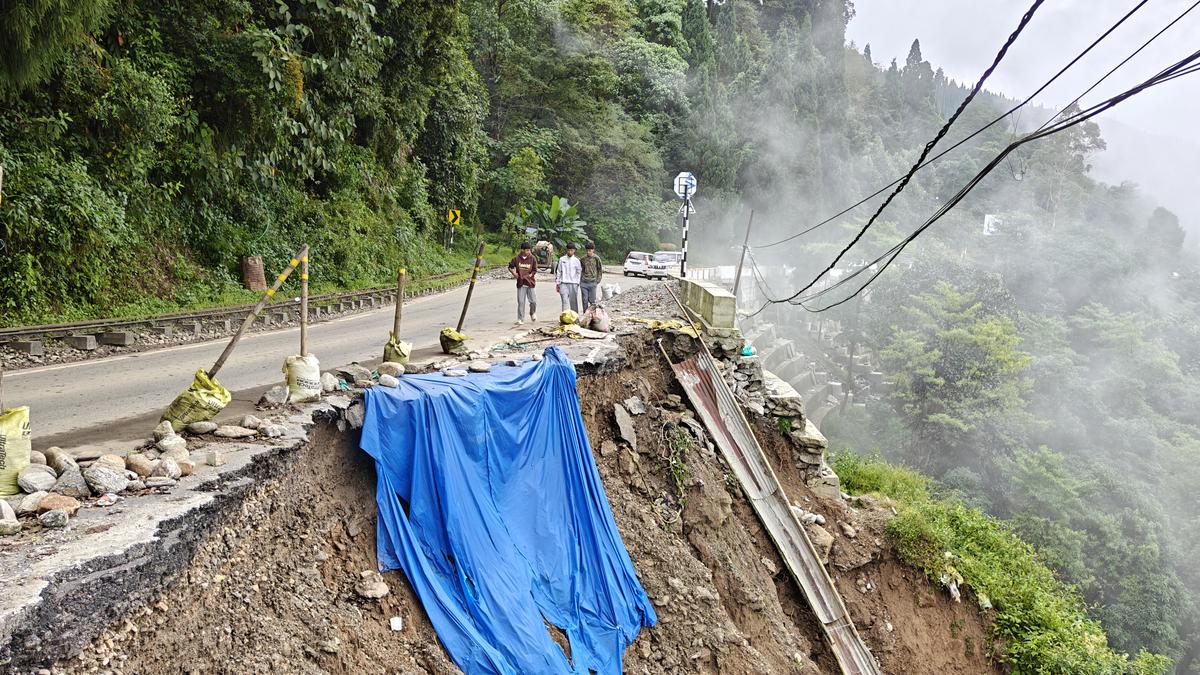
Locals near Sukhiapokhri trying to clear out the debris to make way for local transport. Their homes have been cut off from the rest of the world for days affecting the lives of both locals and tourists who come to stay in these parts.
| Photo Credit: Shrabana Chatterjee
Darjeeling/Mirik
Tourism and travel in the hills of north Bengal has taken a major hit as the areas reel under the severe aftermath of the floods that shook the place on October 4-5. Though tourists are returning, the industry as a whole has seen a 15% cancellation of tours across the valley including places like Darjeeling, Mirik, and others.
According to the officials of the Himalayan Hospitality Tourism Development Network (HHTDN,) local administration along with tourism groups managed to rescue all 860 tourists by October 5, the ones who wanted to leave after the floods and landslides engulfed the hills.

“A lot of misinformation is spreading that all places in the hills have been blocked or closed down. Tourists must call official helpline numbers for the correct information, otherwise we face unnecessary cancellations in places where there has been no impact,” Samrat Sanyal, secretary of HHTDN told The Hindu on Wednesday (October 8, 2025).
However, he added that places like Mirik, Bijanbari, Tabakoshi, Sukhiapokhri, and others have been severely impacted due to the heavy rains and landslides affecting tourism. According to his estimates the hills have lost around 50 crores in the last three days due to the aftermath of the floods, though official figures are yet to come.
“We were scared when the incident happened. But we were in Darjeeling town which was not impacted even though areas in the Darjeeling district were impacted. So did not go back. However, a friend group who was supposed to join us later cancelled their bookings; they were too scared by the videos on photos on social media,” a tourist from Kolkata staying in Darjeeling since October 2 said.
Tourism experts in the hills called for a rethought model of tourism which is more sustainable and promotes ecologically sound structures to avoid such escalated situations in the the future.
“Himalayas are vulnerable, not only in Darjeeling, across India people should not travel in the night when the risk factor increases,” Mr. Sanyal added.
He also said that rural tourism and small homestay bookings have suffered way more than popular locations. Unmonitored construction of homestays at vulnerable locations must be checked to see if they are following the government protocols to ensure sustainable tourism in ecologically sensitive zones, Mr. Sanyal added.

A lady who owns a small eatery near Mirik Lake said that customers are dwindling in numbers due to the trauma of the floods and deaths. “Hardly one customer a day is turning up, we are counting losses in peak tourist season,” she added. The lanes of Mirik which are packed with cars and tourists during this time bear a deserted look with only a couple of people walking down the streets. At least 11 people have died in Mirik due to the floods creating a sense of fear in the people.
Some roads are still blocked which is forcing tourists to take long detours, but local authorities are speeding up the restoration process to reduce the impact on business.
In the wake of the 261mm rain in north Bengal which triggered over 110 major landslides and killed over 28 people, the hills which are heavily dependent on tourism is battling the added burden of losing business as many mourn the loss of their loved ones.
Published – October 09, 2025 02:37 am IST






















